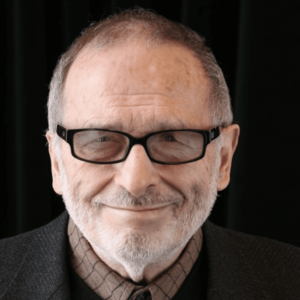Environmentalist Gerald Kutney recently observed: “The summer of 2023 … the season that Canada burned … and burned … and burned.”
Similar observations about the “record-setting wildfire season” (and beyond) are being noted in Ottawa. Three days after Labour Day 2023, federal Minister for Emergency Preparedness Harjit Sajjan was pointing to what has been called “a more national approach to disaster response.”
Mr. Sajjan went on : “We’re looking at all different types of disasters, doing the lessons-learned, and we’ll come out with the appropriate response … I would say all options are currently on the table but we don’t have an answer for you yet.”
The pondering of options has been going on for a few months now. And in thinking about Mr. Sajjan’s “appropriate response” one obvious example has loomed — the sometimes fabled Federal Emergency Management Agency (or FEMA) in the United States next door.
Early this past June 2023 The Canadian Press was reporting that “Ottawa looking at options for a national disaster response agency as wildfires rage … FEMA has coordinated the response to disasters in U.S. for decades.”
A few days later York University Disaster & Emergency Management Professor Ali Asgary was arguing that “Canada urgently needs a FEMA-like emergency management agency.”
For good and bad reasons it is almost certainly not appropriate to talk too exactly about any “Canadian FEMA”! Just to start with, provinces (10) are stronger in Canadian federalism than states (50) in American federalism (thanks in part to the ongoing example of Quebec?).
The US federal bureaucracy is similarly very sprawling and diverse. FEMA is at least a perhaps unusually effective expression of the Washington alphabet soup syndrome. The Ottawa scene is tighter, more disciplined by Canada’s UK-style parliamentary government.
Even today FEMA is far from perfect. It has been claimed that middle-income Americans tend to get more from its financial and other disaster assistance than low-income Americans.
Republican administrations have also intermittently compromised FEMA’s professional competence with old-school political appointments. George W. Bush’s choice of Michael Brown as head of FEMA in 2003 is a case in point. (Brown was a lawyer who had unsuccessfully run for Congress as a Republican, with at best limited disaster management experience. He resigned from FEMA in 2005, after harsh criticism over the handling of Hurricane Katrina.)
At the same time, Canada’s 1960’s prime minister (and 1957 Nobel Peace Prize winner) Lester Pearson once told a TV interviewer that in his youth he thought the only good models for government in Canada came from the United Kingdom. In his more experienced old age he had also come to admire some models from the United States!
As York University Professor Ali Asgary similarly urged this past June, in the 2020s there is a strong argument, that, alongside much other more troubling news stateside, FEMA remains an impressive national disaster response institution.
Canada, again, is not the same as the United States, despite all contrary rumours. The FEMA model cannot just be copied up north. As a new age of more frequent disasters haunts the horizon, however, Lester Pearson would almost certainly advise that FEMA’s long experience does have useful lessons-learned for Canada.
One example may be especially important. President Jimmy Carter created FEMA in 1979. But it was not until President Bill Clinton appointed his former Arkansas emergency manager James Lee Witt FEMA director in 1993 that the agency began to develop its modern reputation as a model emergency management organization.
James Lee Witt brought a kind of disaster management evangelism to the culture of the Federal Emergency Management Agency in the USA. And this energized the professionalism he also brought to the organization, in a way that has somehow endured.
As explained by a subsequent Atlanta Journal-Constitution editorial “FEMA has developed a sterling reputation for delivering disaster-relief services, a far cry from its abysmal standing before James Lee Witt took its helm .. he instilled in the agency a spirit of preparedness, of service to the customer, of willingness to listen to ideas of local and state officials to make the system work better.”
One lesson-learned would seem to be that it’s not enough to create some organizational structure for “a more national approach to disaster response.” You also need a James Lee Witt to get the structure up and running effectively.
Does such a person exist in Canada today? (Maybe right now fighting a fire or a flood somewhere, in BC or Nova Scotia or northern Quebec?)






